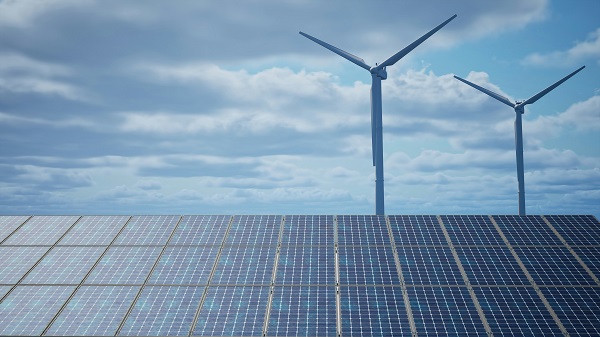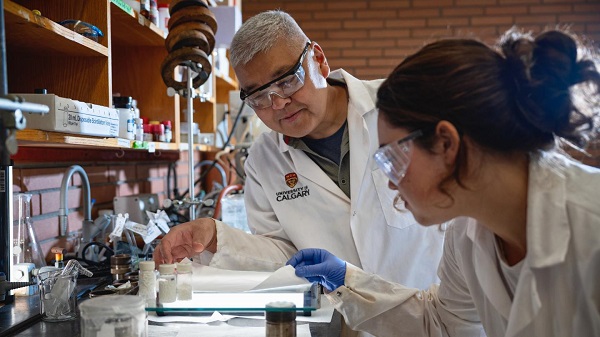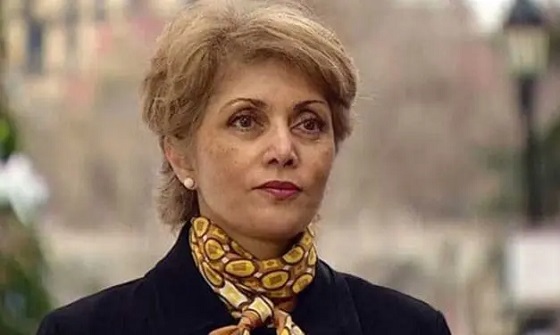Energy
There is nothing green about the ‘green’ agenda

Quick Hit:
RealClearEnergy contributor Steve Milloy argues that the environmental left has been disingenuous about the true costs of so-called green energy. He exposes the environmental and human toll of electric vehicles, solar, and wind power, calling the movement’s claims “Orwellian.”
Key Details:
-
Milloy criticizes Energy Secretary Jennifer Granholm for claiming President Trump is helping China by cutting subsidies for the green economy.
-
He highlights the use of child labor and environmental destruction in mining for electric vehicle (EV) components like lithium and nickel.
-
He challenges the credibility of climate activists, pointing out decades of failed predictions and misleading rhetoric.
Diving Deeper:
Now that Democrats no longer control the federal government, Steve Milloy argues that climate activists are scrambling to rebrand their agenda to appeal to conservatives. In a recent op-ed for RealClearEnergy, Milloy calls out Energy Secretary Jennifer Granholm for claiming that Trump’s rollback of green energy subsidies is a win for Communist China. Milloy translates this as frustration from the left over the end of “the flow of billions of taxpayers’ dollars to subsidize electric vehicles that nobody wants and only the well-off can afford.”
According to Milloy, the so-called green agenda is anything but environmentally friendly. “If the climate movement was truly sincere and intellectually honest in its desire to stop actions contributing to global environmental degradation, it would stand fast against solar panels and electric vehicles,” he writes. He details the horrific conditions in the Democratic Republic of Congo, where children mine cobalt for lithium-ion batteries with their bare hands, breathing in toxic dust while contaminating their own water supply. Meanwhile, he says, activists remain “blithely unaware or unconcerned in the comfort of their own homes.”
The mining of nickel, another key EV battery component, also devastates the environment. Milloy describes Indonesia’s nickel refining operations, where thick brown smog chokes the air, and chemicals leach into groundwater. “Whatever else climate activists may try to tell us, there is nothing green going on here,” he asserts.
In Brazil, an aluminum refinery linked to Ford’s now-canceled all-electric F-150 Lightning has been accused of poisoning local communities with toxic chemicals. Milloy highlights a lawsuit alleging that heavy metal contamination has caused cancer, birth defects, and neurological disorders. Meanwhile, a separate Brazilian EV factory was recently shut down due to “slavery”-like working conditions. “How is that a green virtue?” Milloy asks.
The environmental destruction doesn’t stop with EVs. “Solar energy, long the prize pig of the climate crowd, isn’t green either,” Milloy writes, citing studies showing that clearing forests for solar farms actually increases carbon emissions. Wind power, he notes, is no better, with massive wind farms killing wildlife and disrupting ecosystems both on land and offshore.
Milloy argues that the climate movement has long relied on fear-mongering and deception. “In 1970, they assured us that human activity would cause an ice age by the 21st century,” he recalls. Predictions of global famine, acid rain catastrophes, and rising sea levels have all failed to materialize. He points to Al Gore’s 2008 claim that the North Pole would be ice-free within five years and UK Prime Minister Gordon Brown’s 2009 declaration that the world had “fewer than 50 days to save our planet from catastrophe.” “Spoiler alert: We’re still here and thriving,” Milloy quips.
Ultimately, he says, there is no such thing as “clean” or “dirty” energy—only trade-offs and solutions. With energy costs already high, Milloy argues that reliable fossil fuels remain essential. “Word sophistry from our friends on the left won’t change that,” he concludes.
Alberta
Nobel Prize nods to Alberta innovation in carbon capture

From the Canadian Energy Centre
‘We are excited to bring this made-in-Canada innovation to the world’
To the naked eye, it looks about as exciting as baking soda or table salt.
But to the scientists in the University of Calgary chemistry lab who have spent more than a decade working on it, this white powder is nothing short of amazing.
That’s because the material they invented is garnering global attention as a new solution to help address climate change.
Known as Calgary Framework-20 (CALF-20 for short), it has “an exceptional capacity to absorb carbon dioxide” and was recognized in connection with the 2025 Nobel Prize in Chemistry.
“It’s basically a molecular sponge that can adsorb CO2 very efficiently,” said Dr. George Shimizu, a UCalgary chemistry professor who leads the research group that first developed CALF-20 in 2013.
The team has been refining its effectiveness ever since.
“CALF-20 is a very exciting compound to work on because it has been a great example of translating basic science into something that works to solve a problem in the real world,” Shimizu said.
Advancing CCS
Carbon capture and storage (CCS) is not a new science in Alberta. Since 2015, operating projects in the province have removed 15 million tonnes of CO2 that would have otherwise been emitted to the atmosphere.
Alberta has nearly 60 proposed facilities for new CCS networks including the Pathways oil sands project, according to the Regina-based International CCS Knowledge Centre.
This year’s Nobel Prize in Chemistry went to three of Shimizu’s colleagues in Japan, Australia and the United States, for developing the earliest versions of materials like CALF-20 between 1989 and 2003.
Custom-built molecules
CALF-20 is in a class called metal-organic frameworks (MOFs) — custom-built molecules that are particularly good at capturing and storing specific substances.
MOFs are leading to new technologies for harvesting water from air in the desert, storing toxic gases, and capturing CO2 from industrial exhaust or directly from the atmosphere.
CALF-20 is one of the few MOF compounds that has advanced to commercial use.
“There has been so much discussion about all the possible uses of MOFs, but there has been a lot of hype versus reality, and CALF-20 is the first to be proven stable and effective enough to be used at an industrial scale,” Shimizu said.
It has been licensed to companies capturing carbon across a range of industries, with the raw material now being produced by the tonne by chemical giant BASF.
Carbon capture filter gigafactory
Svante Inc. has demonstrated its CALF-20-based carbon capture system at a cement plant in British Columbia.
The company recently opened a “gigafactory” in Burnaby equipped to manufacture enough carbon capture and removal filters for up to 10 million tonnes of CO2 annually, equivalent to the emissions of more than 2.3 million cars.
The filters are designed to trap CO2 directly from industrial emissions and the atmosphere, the company says.
Svante chief operating officer Richard Laliberté called the Nobel committee’s recognition “a profound validation” for the entire field of carbon capture and removal.
CALF-20 expansion
Meanwhile, one of Shimizu’s former PhD students helped launch a spinoff company, Existent Sorbents, to further expand the applications of CALF-20.
Existent is working with oil sands producers, a major steel factory and a U.S.-based firm capturing emissions from other point sources, said CEO Adrien Côté.
“The first users of CALF-20 are leaders who took the risk of introducing new technology to industries that are shrewd about their top and bottom lines,” Côté said.
“It has been a long journey, but we are at the point where CALF-20 has proven to be resilient and able to survive in harsh real-world conditions, and we are excited to bring this made-in-Canada innovation to the world.”
Business
Bill Gates walks away from the climate cult

Billionaire Bill Gates — long one of the loudest voices warning of climate catastrophe — now says the world has bigger problems to worry about. In a 17-page memo released Tuesday, the Microsoft co-founder called for a “strategic pivot” away from the obsessive focus on reducing global temperatures, urging leaders instead to prioritize fighting poverty and eradicating disease in the developing world. “Climate change is a serious problem, but it’s not the end of humanity,” Gates wrote.
Gates, 70, argued that global leaders have lost perspective by treating climate change as an existential crisis while millions continue to suffer from preventable diseases like malaria. “If I had to choose between eradicating malaria and preventing a tenth of a degree of warming, I’d let the temperature go up 0.1 degree,” he told reporters ahead of next month’s U.N. climate conference in Brazil. “People don’t understand the suffering that exists today.”
For decades, Gates has positioned himself as a leading advocate for global climate initiatives, investing billions in green energy projects and warning of the dangers of rising emissions. Yet his latest comments mark a striking reversal — and a rare admission that the world’s climate panic may have gone too far. “If you think climate is not important, you won’t agree with the memo,” Gates told journalists. “If you think climate is the only cause and apocalyptic, you won’t agree with the memo. It’s a pragmatic view from someone trying to maximize the money and innovation that helps poor countries.”
The billionaire’s change in tone is sure to raise eyebrows ahead of the U.N. conference, where climate activists plan to push for new emissions targets and wealth transfers from developed nations. Critics have long accused Gates and other elites of hypocrisy for lecturing the public about fossil fuels while traveling the globe on private jets. Now, Gates himself appears to be distancing from the doomsday rhetoric he once helped spread, effectively admitting that humanity faces more immediate moral imperatives than the weather.
(AP Photo/Alex Brandon)
Stunning Climate Change pivot from Bill Gates. Poverty and disease should be top concern.
-

 International2 days ago
International2 days agoSagrada Familia Basilica in Barcelona is now tallest church in the world
-

 Alberta2 days ago
Alberta2 days agoGondek’s exit as mayor marks a turning point for Calgary
-

 Agriculture2 days ago
Agriculture2 days agoCloned foods are coming to a grocer near you
-

 Fraser Institute2 days ago
Fraser Institute2 days agoOttawa continues to infringe in areas of provincial jurisdiction
-

 Business21 hours ago
Business21 hours agoYou Won’t Believe What Canada’s Embassy in Brazil Has Been Up To
-

 Censorship Industrial Complex20 hours ago
Censorship Industrial Complex20 hours agoSenate Grills Meta and Google Over Biden Administration’s Role in COVID-Era Content Censorship
-

 Business19 hours ago
Business19 hours agoMystery cloaks Doug Ford’s funding of media through Ontario advertising subsidy
-

 Crime7 hours ago
Crime7 hours agoPublic Execution of Anti-Cartel Mayor in Michoacán Prompts U.S. Offer to Intervene Against Cartels












